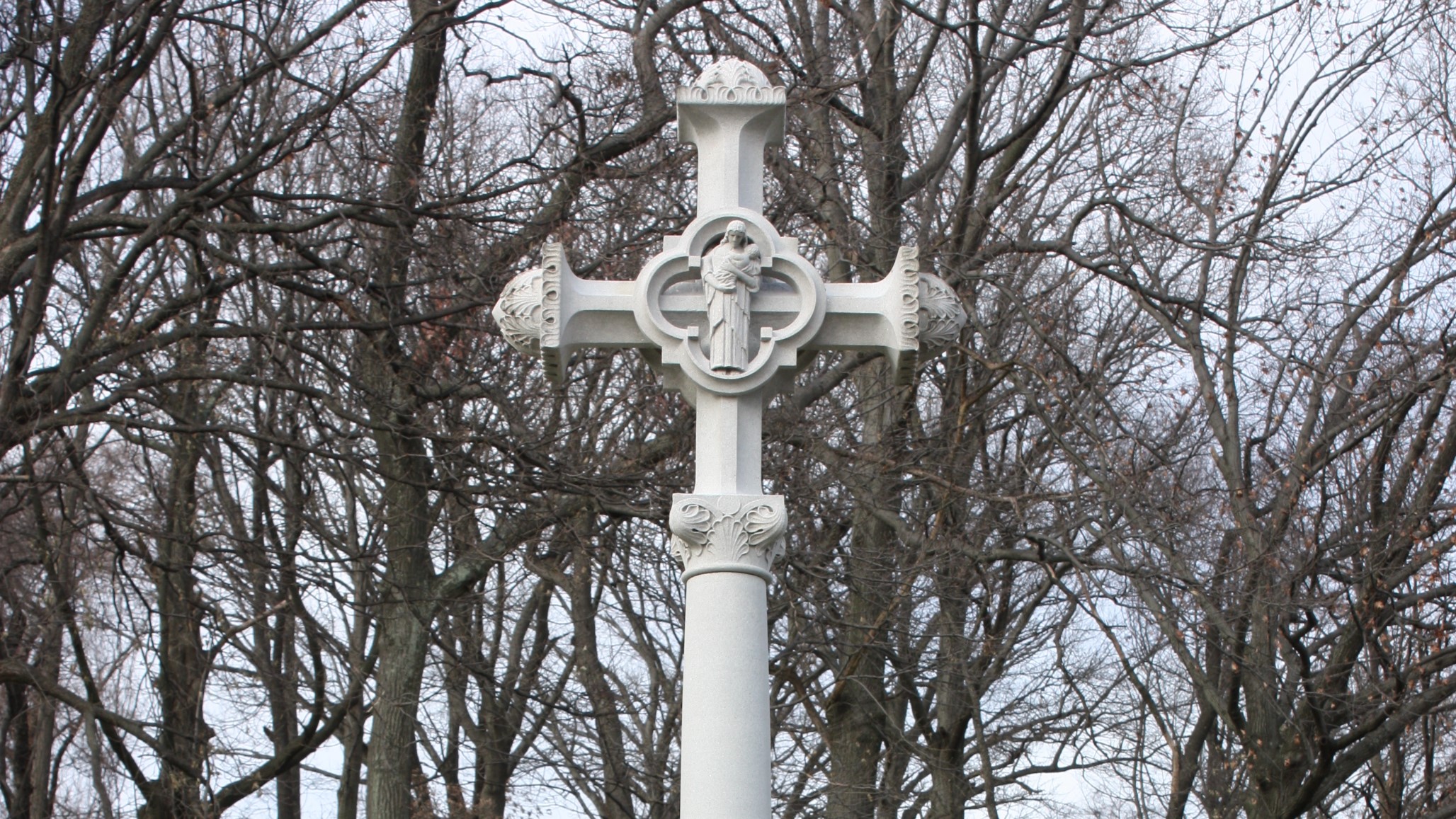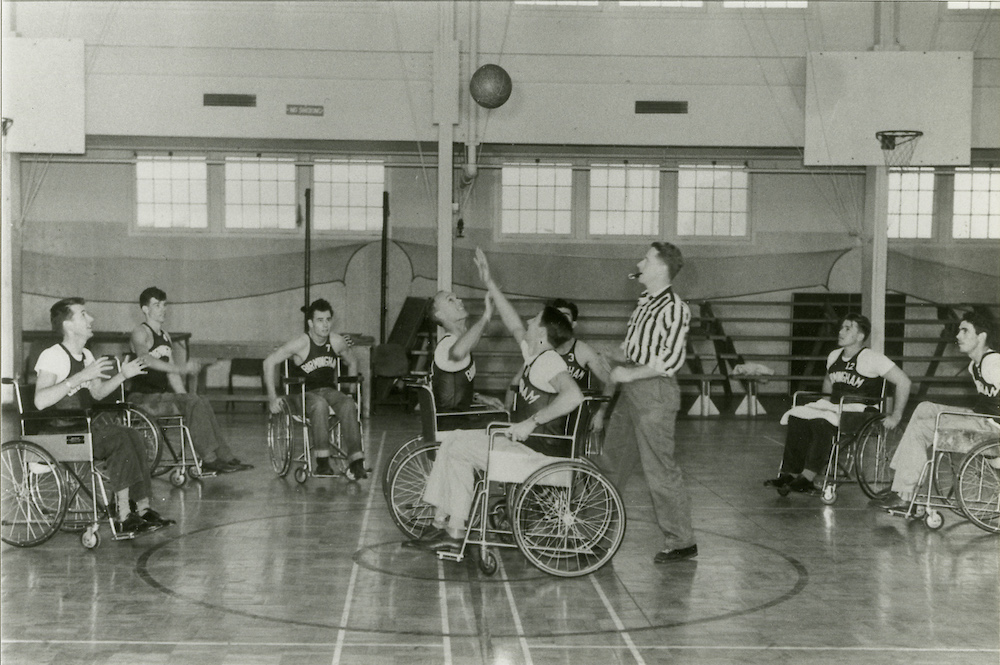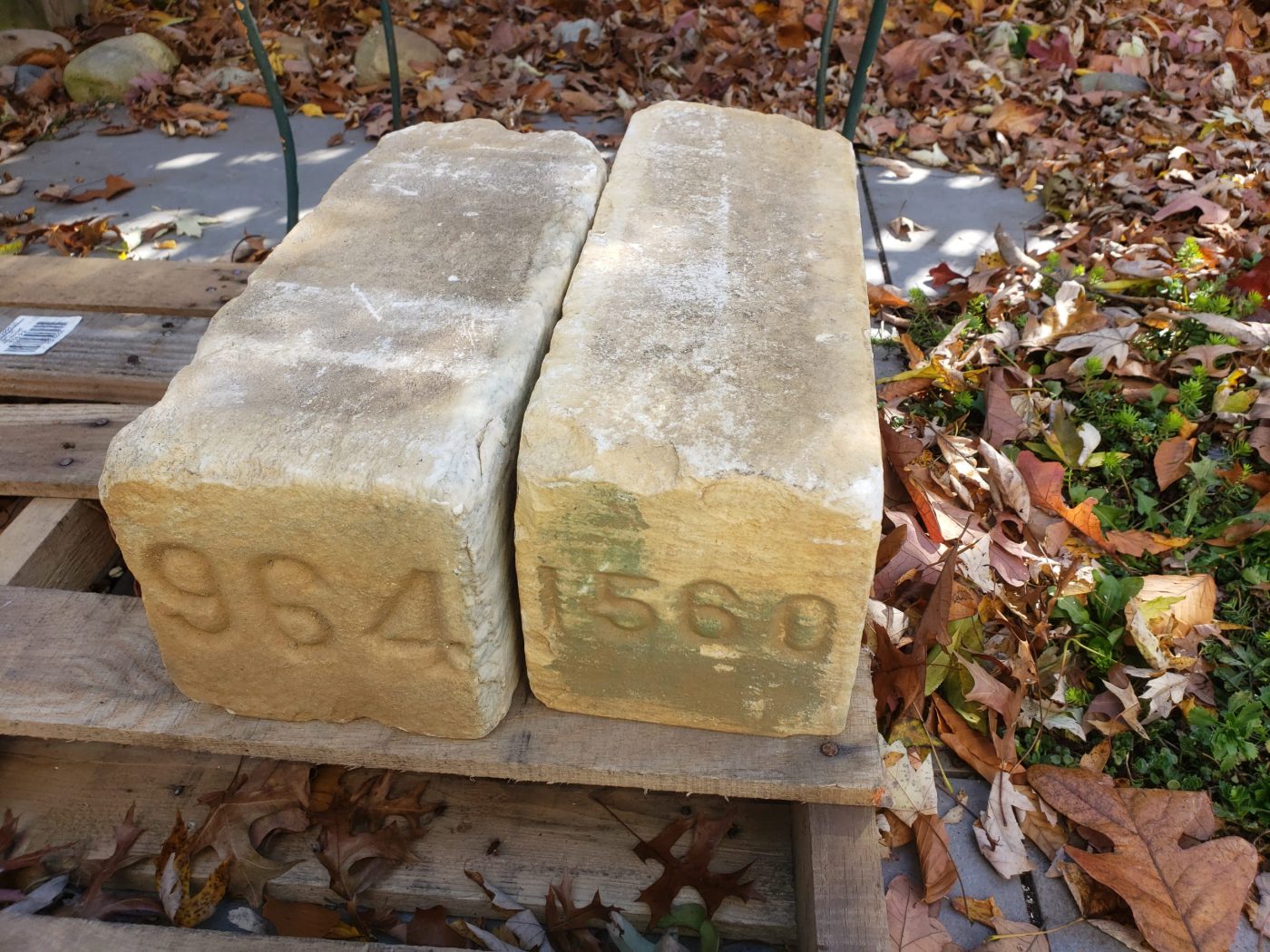
Graves of unknown soldiers in the national cemeteries are commonplace and marked in many different ways. While the Tomb of the Unknown Soldier in the Army’s Arlington National Cemetery is the most culturally recognizable unknown grave, VA national cemeteries also have less grand examples of unknown burials that span the early 19th century through the Korean War. While most are marked with the same upright headstone used to identify other fallen soldiers of their era, some feature more unique designs. At St. Augustine National Cemetery in Florida, for instance, three coquina pyramids erected in 1842 mark the collective reinterment of nearly 200 soldiers killed in the Florida Indian Wars (1835–1842). At San Francisco National Cemetery, a rough-hewn granite American eagle marks the gravesite of 571 unknowns relocated from other parts of the cemetery in 1934. The most common form of unknown marker, however, is the simple 6×6-inch stone that adorns the graves of thousands of Civil War soldiers.
The Civil War led to the first official policy for marking graves of unknowns. In the war’s aftermath, 46 percent of the 300,000 Union soldiers and sailors buried in 74 national cemeteries were unidentifiable. That figure was even higher for the U.S. Colored Troops, the U.S. Army’s official name for its segregated Black Civil War regiments. About two-thirds of their dead were never identified. Nonetheless, the federal government endeavored to mark the graves of all who gave their lives while serving in the Union Army and Navy.
During and immediately after the Civil War, the U.S. Army’s Office of the Quartermaster General was responsible for locating, gathering, and, whenever possible, identifying the remains of fallen U.S. troops. The Army kept meticulous records as these graves were found and the remains recovered. If the decedent was reburied in a national cemetery, information was recorded in a permanent ledger and the grave was marked with a temporary headboard. Rotting wooden headboards and Southern antipathy toward Union graves erased the names of innumerable soldiers. The ledgers eventually contributed to the federal government’s publication of Roll of Honor, a multi-volume series of books aimed at informing families and friends of burial locations.
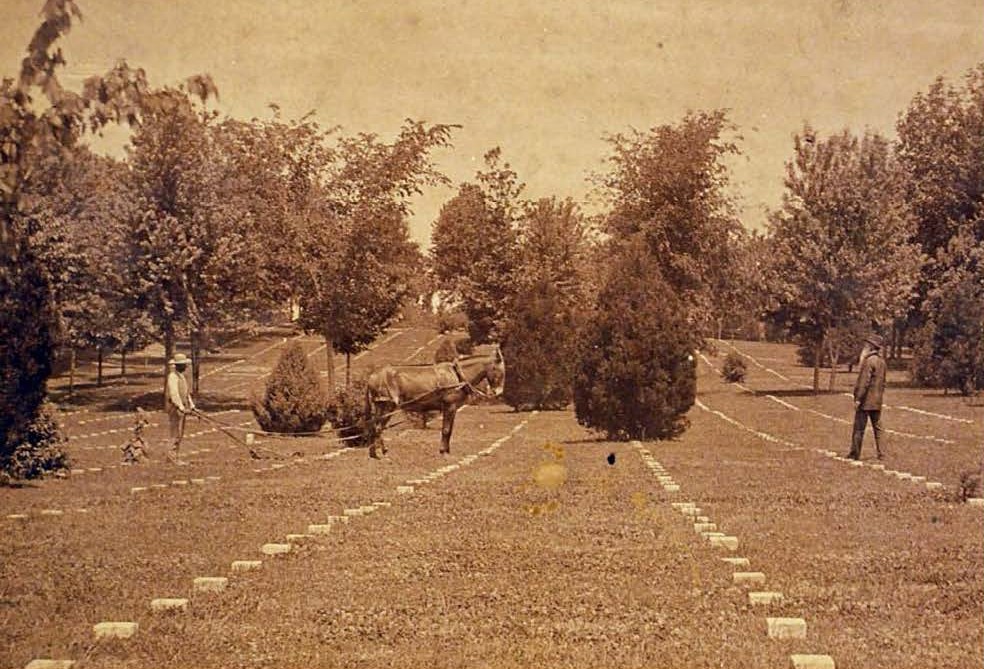
It took the federal government until 1872 to finally settle on the two types of headstones that would permanently mark the Union dead. Graves containing identified servicemembers received an upright marble slab similar in aesthetic to today’s headstones. For unknowns, the Quartermaster General’s office ordered that “the headstone was to be a block of marble or durable stone 6 inches square, and 2 ½ feet long, the top and 4 inches of the sides of the upper part to be neatly dressed and the number of the grave to be cut on the top, the block to be firmly set in the ground with the top just even with the top of the grave.”
These small 6×6 markers created a unique landscape specific to Civil War-era national cemeteries. The squat squares, nearly flush to the ground, numbering in the hundreds and arranged somewhat haphazardly, stood in stark contrast to the rows of upright headstones for their identified comrades in arms. The use of the 6x6s, however, was short-lived. To make the national cemeteries more uniform in appearance and probably for maintenance reasons as well, the Army in 1903 decided to stop furnishing blocks for the graves of the unknown dead and issued upright headstones instead. The markers were identical to those supplied for the known dead but the inscription on their face reads:
Unknown
U.S. Soldier
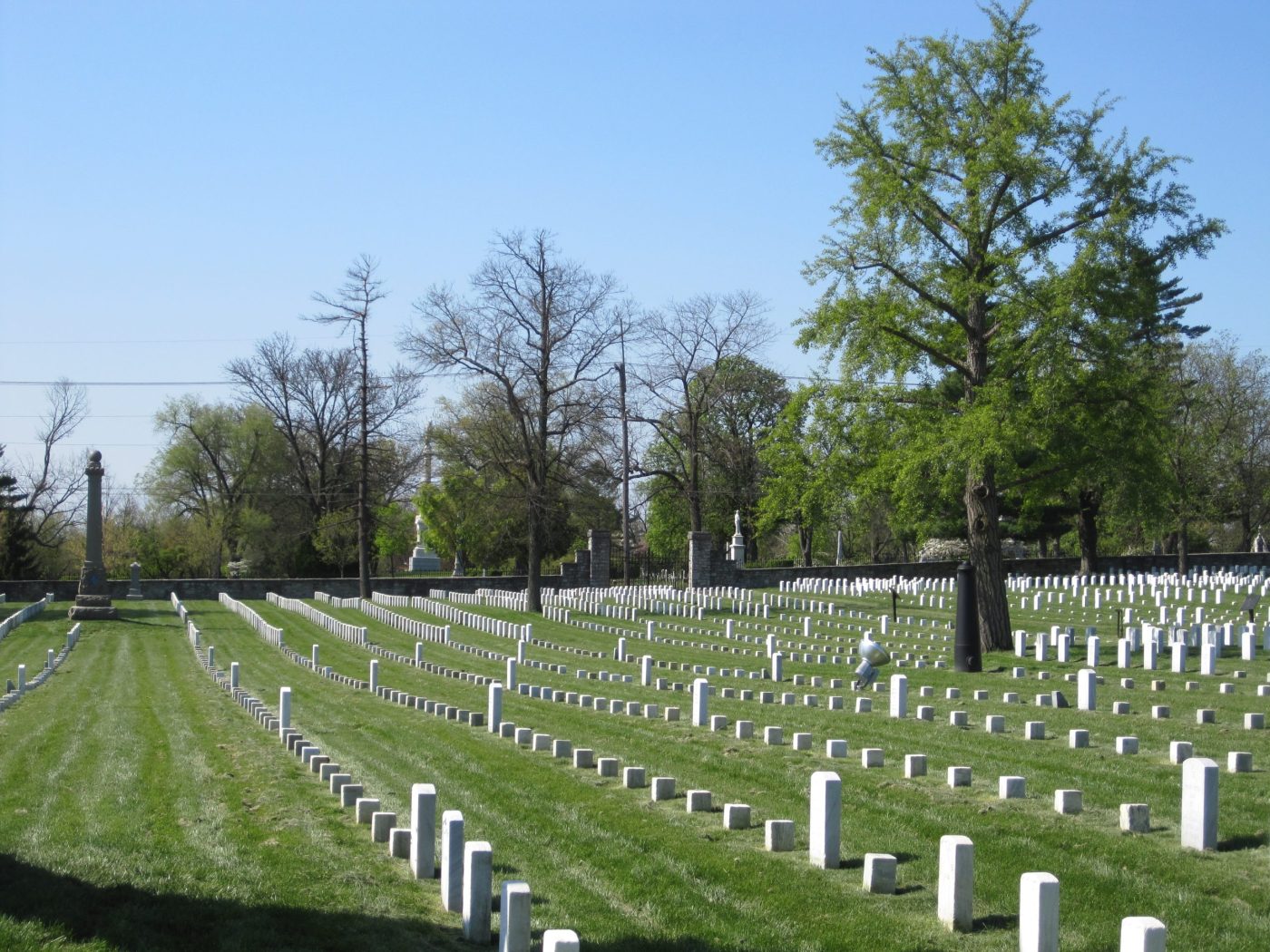
The new policy did not mean the immediate removal of all 6x6s in the system. They were only replaced with upright markers when their condition deteriorated. Rather than discard the stones, however, some cemetery caretakers appreciated their utilitarian shape and found other ways to use them on the grounds. For instance, nearly 100 6x6s were recently discovered at Annapolis National Cemetery in Maryland that were being used for landscaping and drainage purposes. Old maintenance ledgers showed that the markers had been removed and repurposed in the late 1950s, a practice the Army at the time considered resourceful rather than disrespectful. The historic 6x6s were subsequently taken from Annapolis and carefully stored at Baltimore National Cemetery for NCA historians to evaluate and assess. Four of the most intact stones were accessioned into the NCA Artifact Collection and the rest demolished, as is now the standard way to dispose of unserviceable grave markers.
To preserve the historic landscape of the national cemeteries, NCA has reversed the Army policy on removing 6×6 markers in poor condition and now replaces them in kind.
By Richard Hulver, Ph.D.
Historian, National Cemetery Administration
Share this story
Related Stories
History of VA in 100 Objects
In the waning days of World War I, French sailors from three visiting allied warships marched through New York in a Liberty Loan Parade. The timing was unfortunate as the second wave of the influenza pandemic was spreading in the U.S. By January, 25 of French sailors died from the virus.
These men were later buried at the Cypress Hills National Cemetery and later a 12-foot granite cross monument, the French Cross, was dedicated in 1920 on Armistice Day. This event later influenced changes to burial laws that opened up availability of allied service members and U.S. citizens who served in foreign armies in the war against Germany and Austrian empires.
History of VA in 100 Objects
Basketball is one of the most popular sports in the nation. However, for paraplegic Veterans after World War II it was impossible with the current equipment and wheelchairs at the time. While VA offered these Veterans a healthy dose of physical and occupational therapy as well as vocational training, patients craved something more. They wanted to return to the sports, like basketball, that they had grown up playing. Their wheelchairs, which were incredibly bulky and commonly weighed over 100 pounds limited play.
However, the revolutionary wheelchair design created in the late 1930s solved that problem. Their chairs featured lightweight aircraft tubing, rear wheels that were easy to propel, and front casters for pivoting. Weighing in at around 45 pounds, the sleek wheelchairs were ideal for sports, especially basketball with its smooth and flat playing surface. The mobility of paraplegic Veterans drastically increased as they mastered the use of the chair, and they soon began to roll themselves into VA hospital gyms to shoot baskets and play pickup games.
History of VA in 100 Objects
After World War I, claims for disability from discharged soldiers poured into the offices of the Bureau of War Risk Insurance, the federal agency responsible for evaluating them. By mid-1921, the bureau had awarded some amount of compensation to 337,000 Veterans. But another 258,000 had been denied benefits. Some of the men turned away were suffering from tuberculosis or neuropsychiatric disorders. These Veterans were often rebuffed not because bureau officials doubted the validity or seriousness of their ailments, but for a different reason: they could not prove their conditions were service connected.
Due to the delayed nature of the diseases, which could appear after service was completed, Massachusetts Senator David Walsh and VSOs pursued legislation to assist Veterans with their claims. Eventually this led to the first presumptive conditions for Veteran benefits.


